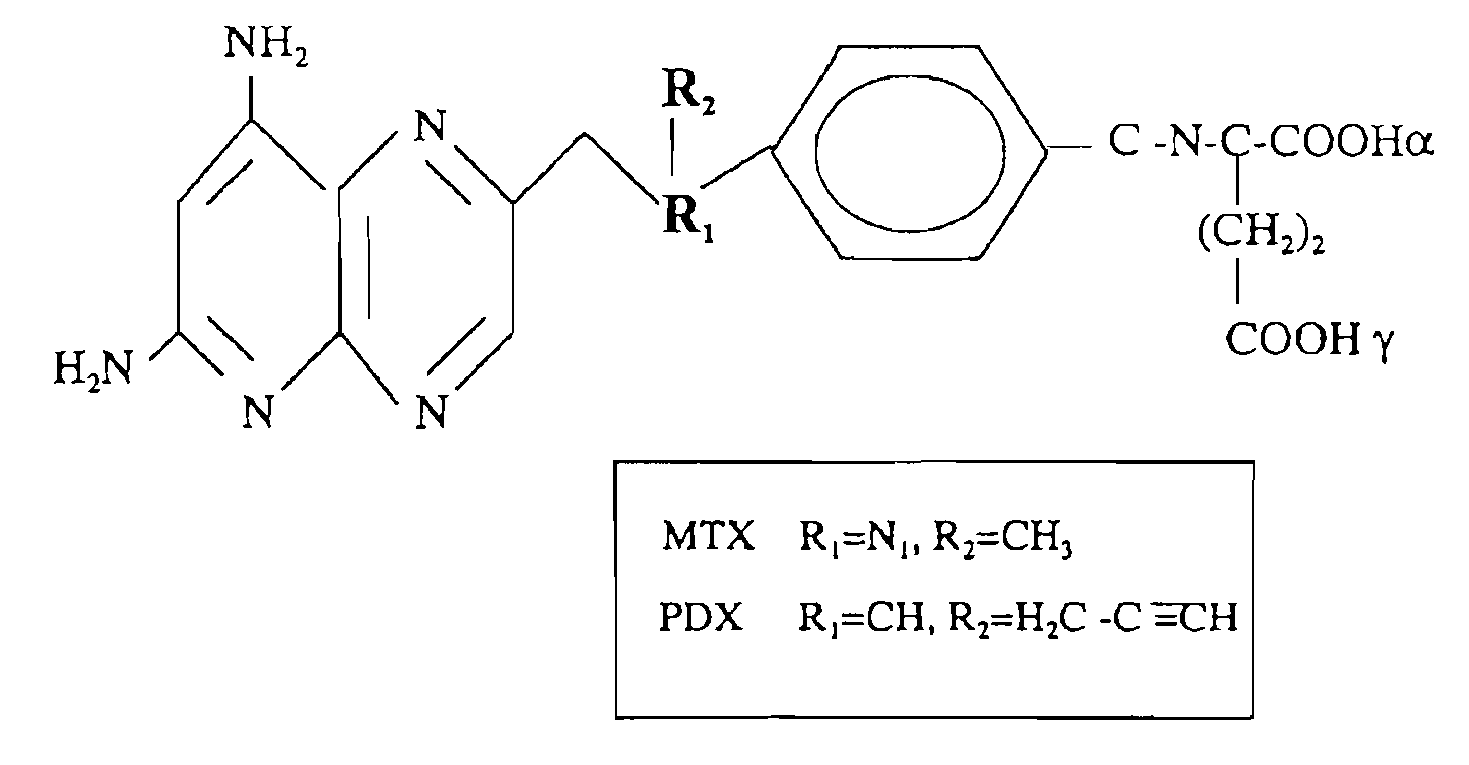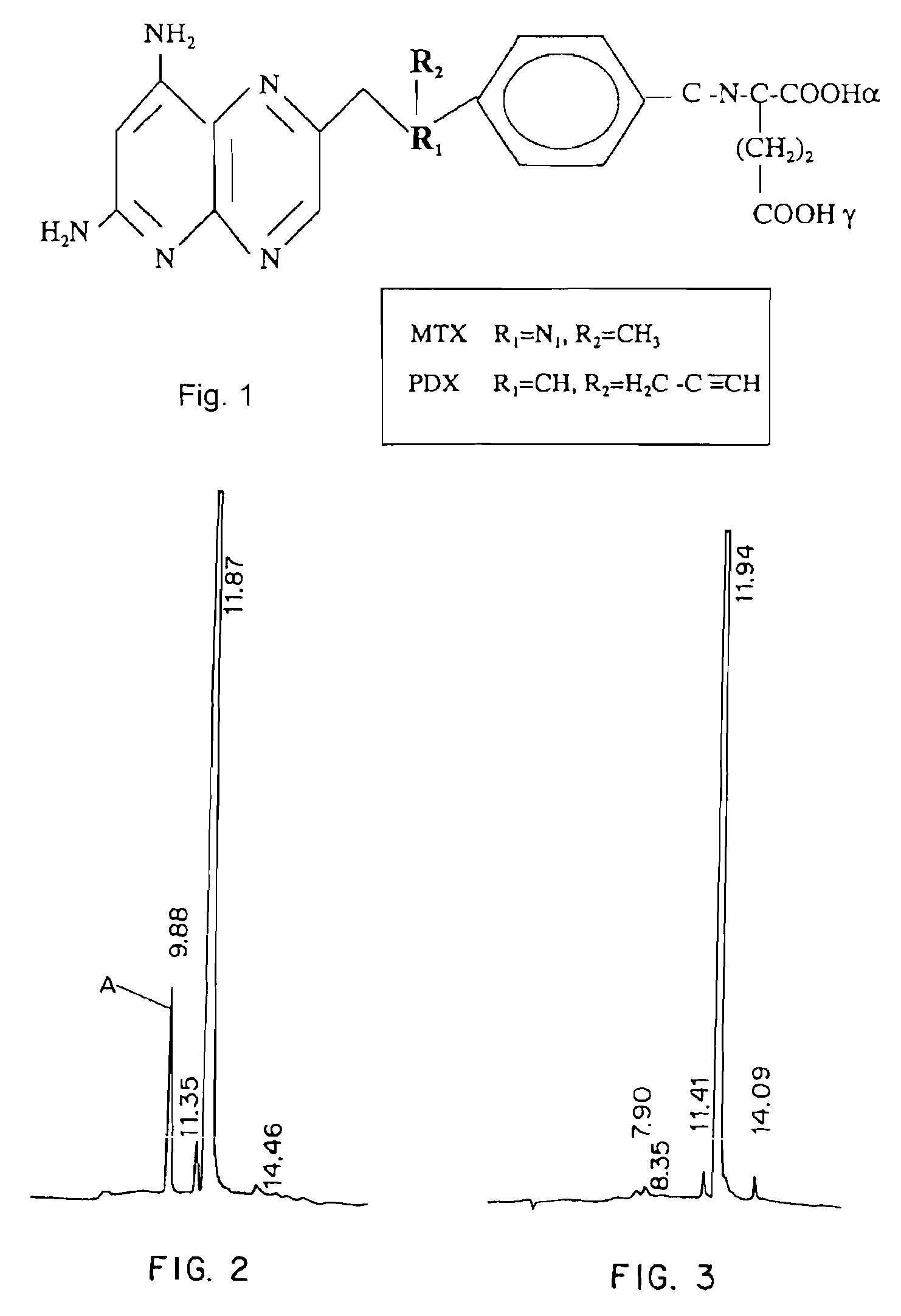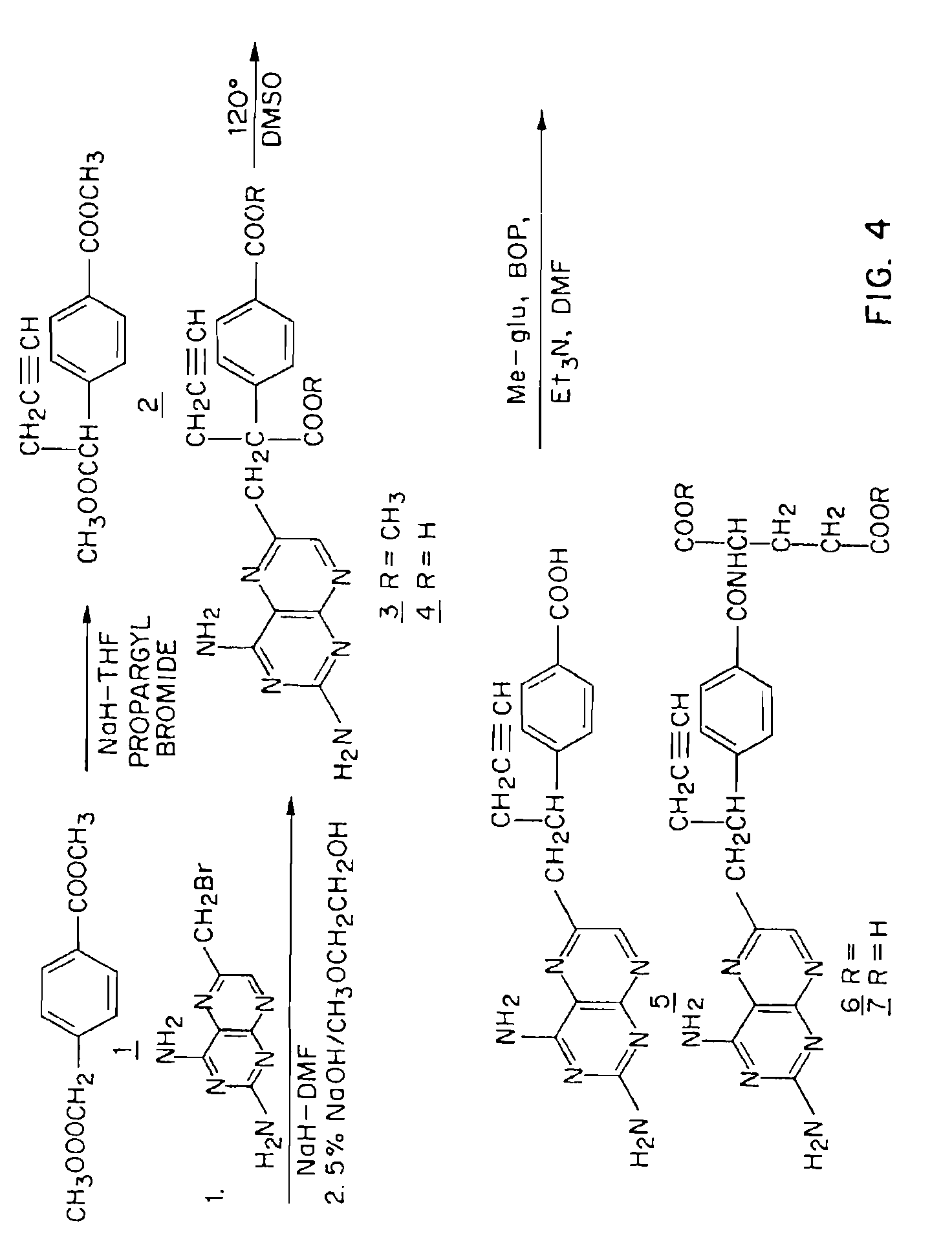Methods to Treat Cancer with 10-propargyl-10-deazaaminopterin and Methods for Assessing Cancer for Increased Sensitivity to 10-propargyl-10-deazaaminopterin
a technology of 10-propargyl and 10-deazaaminopterin, which is applied in the field of methods to treat cancer with 10-propargyl10deazaaminopterin, can solve the problem that the highest dose used was in fact toxic to mi
- Summary
- Abstract
- Description
- Claims
- Application Information
AI Technical Summary
Problems solved by technology
Method used
Image
Examples
example 1
[0076]FIG. 4 shows a synthetic scheme useful in preparing 10-propargyl-10-dAM in accordance with the invention. A mixture of 60% NAH in oil dispersion (1.06 g, 26.5 mmol) in 18 mL of sieve-dried THF was cooled to 0° C. The cold mixture was treated with a solution of homoterephthalic acid dimethyl ester (5.0 g, 24 mmol. compound 1 in FIG. 4) in dry THF (7 mL), and the mixture was stirred for 1 hour at 0° C. Propargyl bromide (26.4 mmol) was added, and the mixture was stirred at 0° C. for an additional 1 hour, and then at room temperature for 16 hours. The resulting mixture was treated with 2.4 mL of 50% acetic acid and then poured into 240 mL of water. The mixture was extracted with ether (2.times.150 mL). The ether extracts were combined, dried over Na2SO4, and concentrated to an orange-yellow oil. Chromatography on silica gel (600 mL of 230-400 mesh) with elution by cyclohexane-EtOAc (8:1) gave the product α-propargylhomoterephthalic acid dimethyl ester (compound 2) as a white soli...
example 2
[0083]This example describes testing of 10-propargyl-10-dAM and MTX for cytotoxicity against human lymphoma cell lines.
[0084]10-propargyl-10-dAM preparation prepared in accordance with Example 1 and an MTX preparation were tested for cytotoxicity against a panel of five human lymphoma cell lines. Experiments were performed as described previously. (Sirotnak et al., Cancer Chemother. Pharmacol. 12: 18-25 (1984). In brief, 2.5 to 5×103 cells were plated per well in 96-well flat bottom plates. Drug was added in a 0.9% NaCl solution (pH 7.0) over a range of concentrations, and cells were continuously exposed to drug for 5 days. Colorimetric dye (XTT or Alamar blue) was added for an addition period of time (XTT dye, 6 hours, Alamar blue, 24 hours). Each plate was then read on an automated plate reader at 590 nm. The percentage of inhibition was calculated as growth of cells exposed to drug divided by growth of controls (cells incubated with media only). IC50 values were determined as the...
example 3
[0085]This example describes the effects of 10-propargyl-10-dAM used in a Phase I / II study on T-cell lymphomas.
[0086]In this study, patients with aggressive lymphoma were enrolled, including three patients with drug-resistant T-cell lymphoma. The following case summaries have been obtained. Each of these patients was also treated with folic acid (1 mg / m2 daily starting 1 week prior to treatment with 10-propargyl-10-dAM) and Vitamin B12 (1 mg / mg / m2 monthly) supplementation.
[0087]Patient 1 had a diagnosis of Peripheral T-cell Lymphoma, Stage 1V. Demographics: 48 Year old male; Prior Treatment: CHOP.times.4 cycles (July 2002-November 2002) refractory, ICE.times.2 cycles (December 2002) refractory, Campath (March 2003-June 2003)—mixed response; Pre-Treatment Staging: Extensive disease cutaneous disease. Treatment on Study: 10-propargyl-10-dAM 135 mg / m2 times.1 dose. Toxicitics observed were Grade 3 stomatitis; neutropenia grade 3; sepsis; Response: Essentially complete remission by PET ...
PUM
| Property | Measurement | Unit |
|---|---|---|
| temperature | aaaaa | aaaaa |
| temperature | aaaaa | aaaaa |
| temperature | aaaaa | aaaaa |
Abstract
Description
Claims
Application Information
 Login to View More
Login to View More - R&D
- Intellectual Property
- Life Sciences
- Materials
- Tech Scout
- Unparalleled Data Quality
- Higher Quality Content
- 60% Fewer Hallucinations
Browse by: Latest US Patents, China's latest patents, Technical Efficacy Thesaurus, Application Domain, Technology Topic, Popular Technical Reports.
© 2025 PatSnap. All rights reserved.Legal|Privacy policy|Modern Slavery Act Transparency Statement|Sitemap|About US| Contact US: help@patsnap.com



